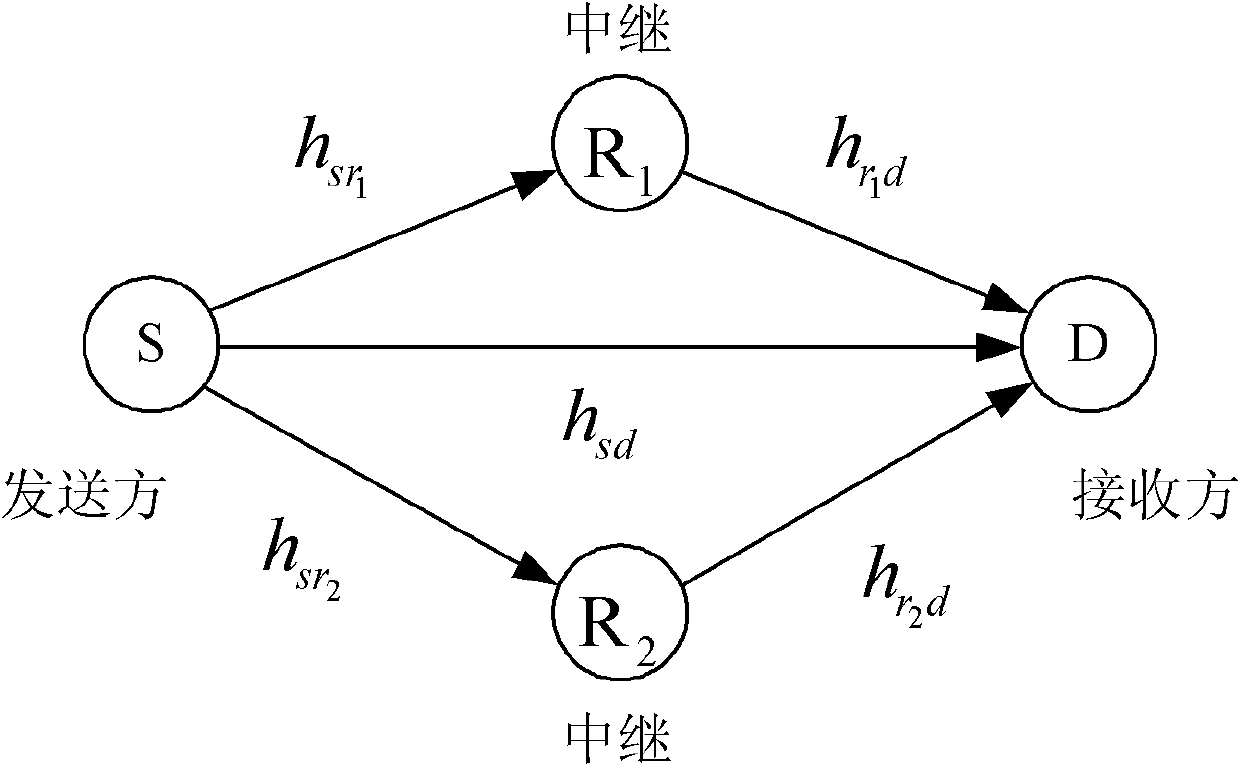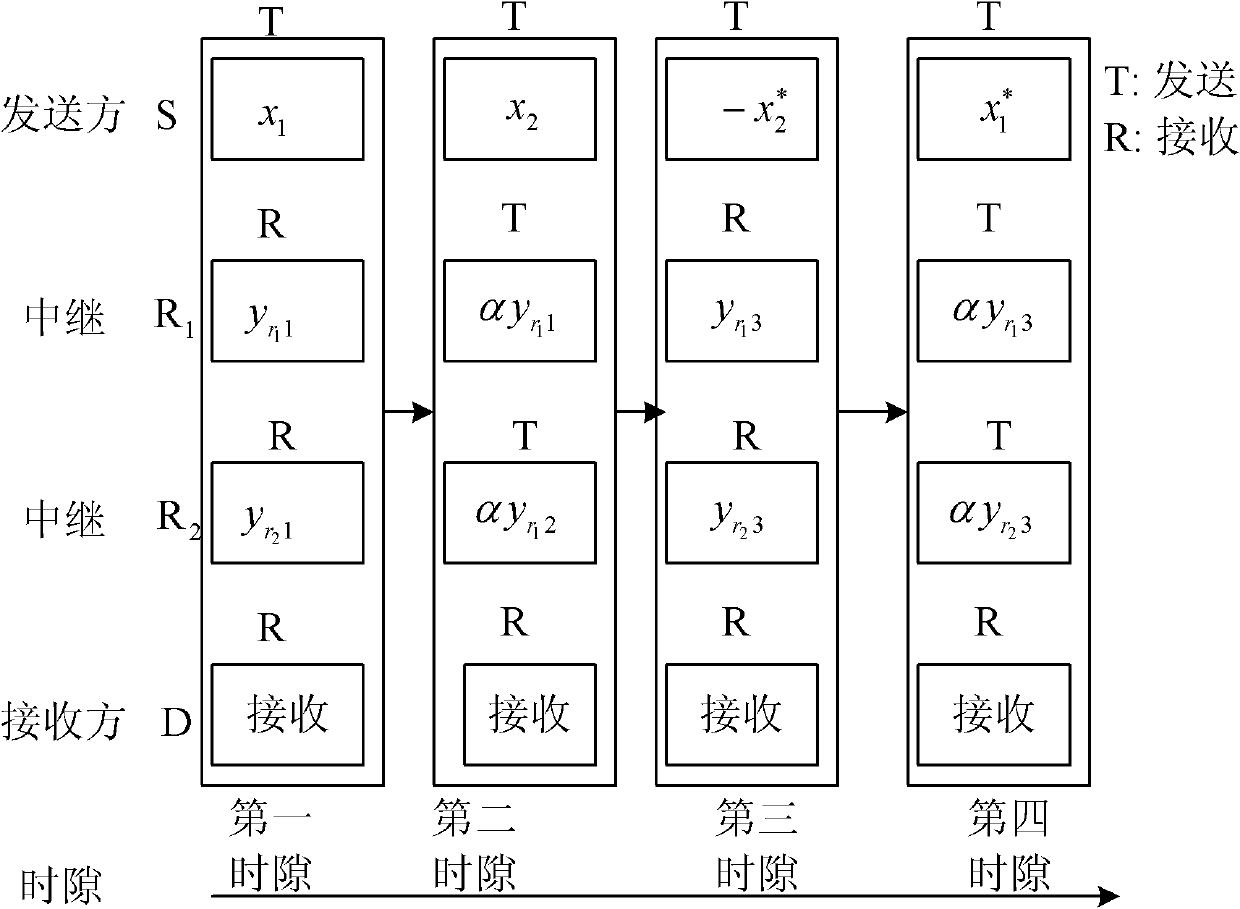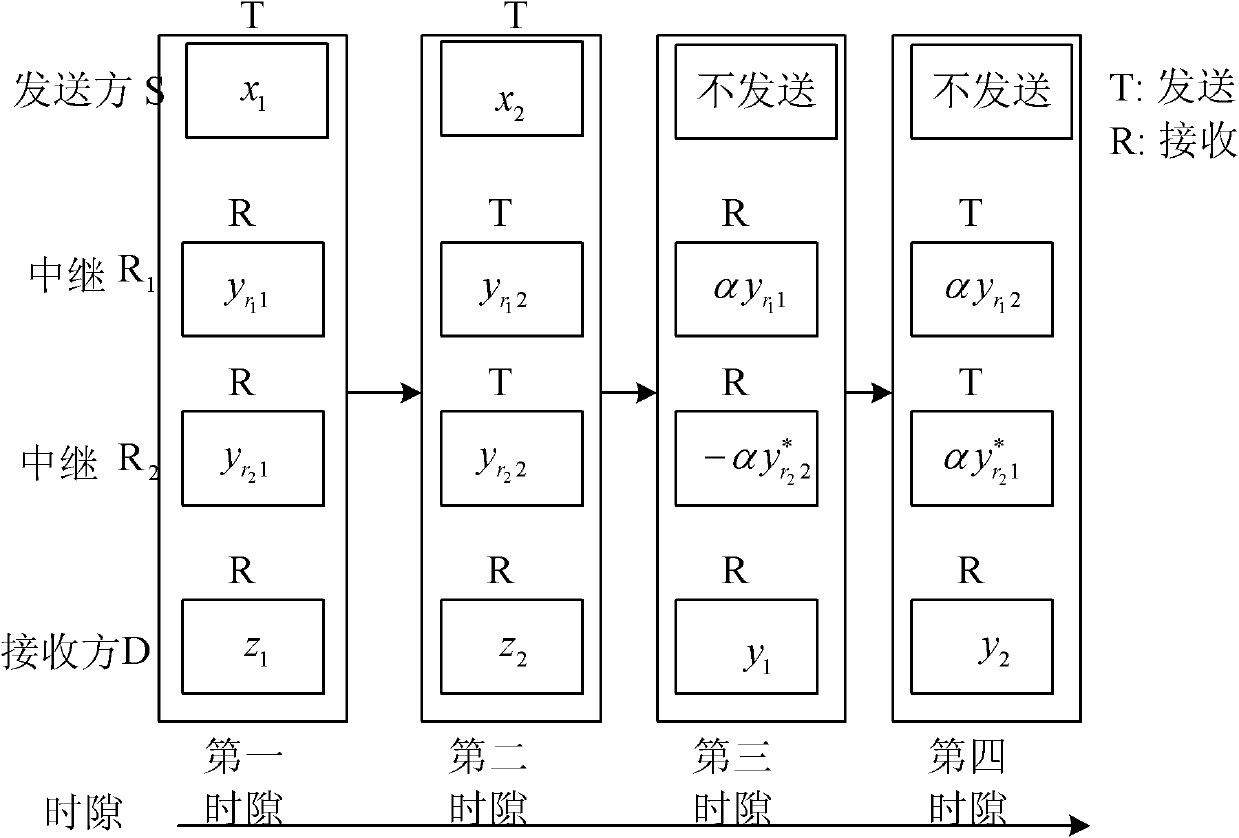Distributed Alamouti coding cooperative transmission method based on quasi-orthogonal channel allocation
A channel allocation and cooperative transmission technology, applied in the transmission system, digital transmission system, multi-frequency code system, etc., can solve the problem that the symbol error rate and spectrum efficiency cannot be taken into account at the same time, so as to improve reliability and effectiveness, optimize spectrum Efficiency, the effect of improving the symbol error rate
- Summary
- Abstract
- Description
- Claims
- Application Information
AI Technical Summary
Problems solved by technology
Method used
Image
Examples
Embodiment Construction
[0028] Reference figure 1 with Figure 4 , The cooperative transmission method of the present invention includes the following steps:
[0029] Step 1. Set up one sender S and two relay nodes R 1 , R 2 And a receiver D to form a communication system, such as figure 1 Shown. figure 1 Sender S, two relay nodes R 1 , R 2 As well as a receiver D, these nodes are equipped with a single antenna and work in a single duplex mode. The present invention assumes that the sender S to two relays R 1 And R 2 Wireless channel with Two relay R 1 , R 2 Wireless channel to D And the wireless channel h from sender S to receiver D sd , Are Rayleigh flat fading channels, and the path loss obeys the exponential fading model, and the fading index is 4. And suppose the channel allocation method is: the channel S→D from the sender to the receiver is the same as the relay R 1 , R 2 Channel R to the receiver i →D, i=1, 2 is orthogonal, which can be achieved by FDMA or CDMA; two relays R 1 , R 2 Channe...
PUM
 Login to View More
Login to View More Abstract
Description
Claims
Application Information
 Login to View More
Login to View More - R&D
- Intellectual Property
- Life Sciences
- Materials
- Tech Scout
- Unparalleled Data Quality
- Higher Quality Content
- 60% Fewer Hallucinations
Browse by: Latest US Patents, China's latest patents, Technical Efficacy Thesaurus, Application Domain, Technology Topic, Popular Technical Reports.
© 2025 PatSnap. All rights reserved.Legal|Privacy policy|Modern Slavery Act Transparency Statement|Sitemap|About US| Contact US: help@patsnap.com



